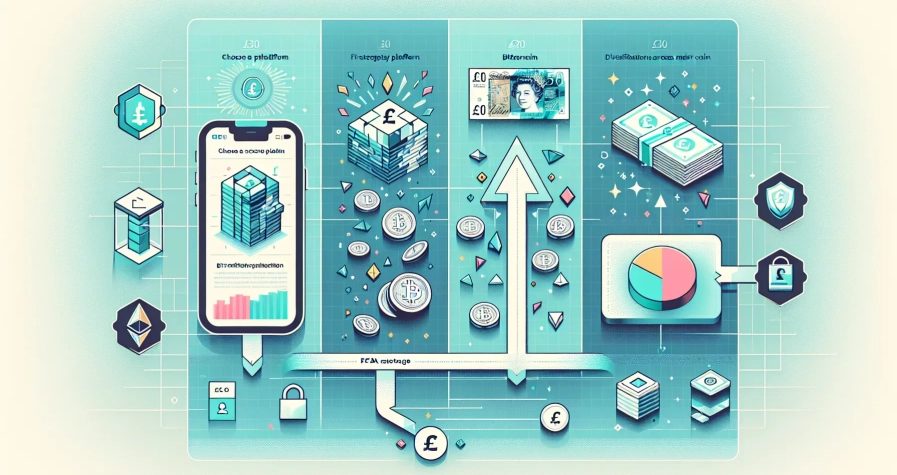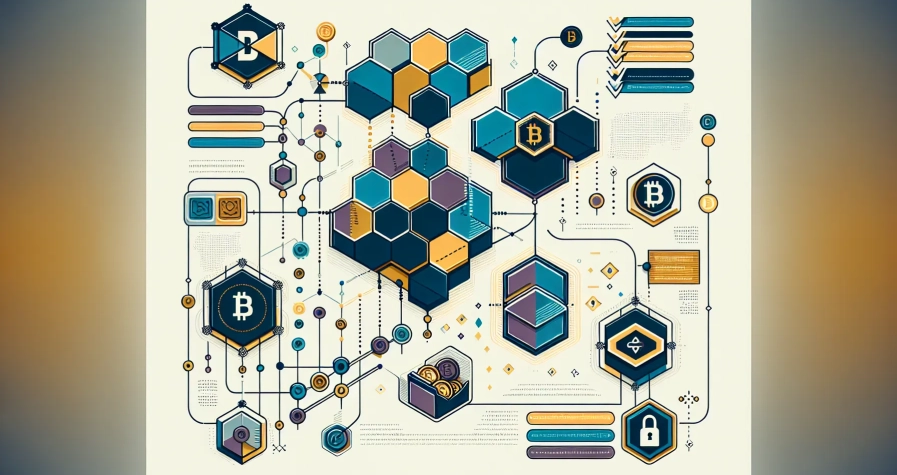You’ve probably heard of Bitcoin but Ethereum represents something far more revolutionary in the cryptocurrency space. While Bitcoin functions primarily as digital money Ethereum serves as a programmable blockchain platform that’s transforming how we think about decentralised applications and smart contracts.
Ethereum isn’t just another cryptocurrency – it’s an entire ecosystem that enables developers to build everything from decentralised finance (DeFi) protocols to non-fungible tokens (NFTs). Since its launch in 2015 this blockchain platform has become the foundation for countless innovations that are reshaping traditional finance gaming and digital ownership.
Whether you’re completely new to cryptocurrency or looking to understand what makes Ethereum special this guide will walk you through everything from its basic concepts to its real-world applications. You’ll discover how Ethereum works why it matters and how it’s different from other blockchain platforms.
What Is Ethereum?
Ethereum operates as a decentralised blockchain platform that enables developers to build and deploy smart contracts and decentralised applications (dApps). You interact with a programmable ecosystem that extends far beyond simple cryptocurrency transactions.
Blockchain Technology Explained
Blockchain technology forms the foundation of Ethereum’s infrastructure through a distributed ledger system that records transactions across multiple computers simultaneously. You access a network where each block contains cryptographic hashes linking it to the previous block, creating an immutable chain of data.
Key blockchain components include:
- Nodes: Individual computers that maintain copies of the blockchain
- Blocks: Data structures containing transaction information and timestamps
- Consensus mechanisms: Protocols ensuring network agreement on valid transactions
- Cryptographic hashing: Security measures protecting data integrity
Miners previously validated Ethereum transactions through proof-of-work consensus, but the network transitioned to proof-of-stake in September 2022. You now witness validators securing the network by staking ETH tokens rather than solving computational puzzles.
| Blockchain Feature | Description | Ethereum Implementation |
|---|---|---|
| Decentralisation | No central authority controls the network | 400,000+ validators worldwide |
| Transparency | All transactions are publicly viewable | Complete transaction history available |
| Immutability | Records cannot be altered once confirmed | Cryptographic security prevents tampering |
| Smart Contracts | Self-executing contracts with coded terms | Native support for complex programmable logic |
How Ethereum Differs from Bitcoin
Ethereum distinguishes itself from Bitcoin through programmability and versatility rather than serving solely as digital currency. You encounter a platform designed for building applications whilst Bitcoin functions primarily as a store of value and payment system.
Programming capabilities set Ethereum apart:
- Smart contracts: Ethereum executes programmable agreements automatically when conditions are met
- Virtual machine: The Ethereum Virtual Machine (EVM) runs decentralised applications across the network
- Development languages: Solidity and Vyper enable complex application development
- Gas system: Transaction fees vary based on computational complexity rather than fixed amounts
Bitcoin processes approximately 7 transactions per second compared to Ethereum’s 15 transactions per second. You experience different transaction costs as Bitcoin fees depend on network congestion whilst Ethereum fees reflect computational resources required for smart contract execution.
Fundamental differences include:
| Aspect | Bitcoin | Ethereum |
|---|---|---|
| Primary Purpose | Digital currency and store of value | Programmable blockchain platform |
| Transaction Speed | 7 TPS | 15 TPS |
| Block Time | 10 minutes | 12 seconds |
| Supply Limit | 21 million BTC | No fixed limit for ETH |
| Consensus Mechanism | Proof-of-work | Proof-of-stake |
Ethereum’s flexibility enables diverse applications from decentralised finance protocols to non-fungible tokens, whilst Bitcoin maintains focus on monetary transactions and value storage.
The Ethereum Ecosystem
The Ethereum ecosystem comprises interconnected components that create a comprehensive decentralised platform for digital innovation. You’ll find this ecosystem includes the blockchain itself, its native cryptocurrency Ether (ETH), and thousands of applications running on this infrastructure.
Smart Contracts and Their Applications
Smart contracts are self-executing programmes stored on Ethereum’s blockchain that automatically enforce agreements when predetermined conditions are met. You don’t require intermediaries when using smart contracts as the code executes transactions automatically once conditions are satisfied.
Key applications of smart contracts include:
- Financial services: Lending protocols like Aave and Compound operate autonomously through smart contract logic
- Insurance: Claims processing occurs automatically when conditions are verified on-chain
- Real estate: Property transfers execute automatically upon payment confirmation
- Supply chain: Product tracking and verification happen transparently across the entire chain
You can deploy smart contracts for rental agreements that automatically refund deposits when keys are returned, eliminating the need for manual intervention. These contracts reduce costs, increase transparency, and remove potential disputes through predetermined execution logic.
Decentralised Applications (dApps)
Decentralised applications run on Ethereum’s blockchain network rather than traditional centralised servers. You access these applications through standard web browsers whilst benefiting from blockchain security and decentralisation.
Popular dApp categories include:
| Category | Examples | Function |
|---|---|---|
| Decentralised Exchanges | Uniswap, SushiSwap | Peer-to-peer cryptocurrency trading |
| Lending Platforms | Compound, MakerDAO | Collateralised lending and borrowing |
| Gaming | Axie Infinity, CryptoKitties | Blockchain-based gaming with digital ownership |
| Social Media | Steemit, Minds | Content creation with token rewards |
You can interact with dApps using cryptocurrency wallets like MetaMask, which connects your browser to the Ethereum network. These applications operate without central authority control, giving you true ownership of your data and digital assets.
Ethereum Virtual Machine (EVM)
The Ethereum Virtual Machine serves as Ethereum’s decentralised computing environment where all network nodes execute smart contracts and maintain consensus. You benefit from this standardised execution environment as it ensures your smart contracts run identically across thousands of nodes worldwide.
The EVM functions as Ethereum’s “world computer” by:
- Processing transactions: Every transaction undergoes verification and execution across the network
- Maintaining state: The EVM tracks account balances, contract data, and blockchain history
- Enabling interoperability: Applications deployed on the EVM can interact seamlessly with each other
- Providing security: Consensus mechanisms ensure all nodes agree on the blockchain’s current state
You pay gas fees in ETH when executing transactions or deploying smart contracts, which compensates network validators for computational resources. The EVM’s design allows developers from anywhere to create applications that integrate with existing Ethereum infrastructure, fostering innovation and collaboration across the global developer community.
Understanding Ether (ETH)
Ether (ETH) represents Ethereum’s native cryptocurrency that powers the entire ecosystem. Understanding ETH’s functionality and acquisition methods enables you to participate in Ethereum’s revolutionary blockchain platform.
What Is Ether and How Does It Work?
Ether functions as the essential fuel powering Ethereum’s decentralised network operations. You use ETH to pay transaction fees, execute smart contracts, and interact with decentralised applications across the platform.
The Ethereum network operates through a proof-of-stake consensus mechanism where validators secure transactions by staking their ETH tokens. Validators earn ETH rewards for successfully validating transaction blocks and maintaining network security. This energy-efficient system replaced Ethereum’s previous proof-of-work model in September 2022.
When you interact with Ethereum, every action requires ETH to cover gas fees. These fees compensate validators for processing your transactions and executing smart contract operations. Gas prices fluctuate based on network demand, with higher fees during periods of increased activity.
ETH serves multiple purposes within the ecosystem:
- Transaction medium: Enables peer-to-peer transfers between Ethereum addresses
- Gas payment: Covers computational costs for smart contract execution
- Staking asset: Allows participation in network validation through staking pools
- Store of value: Functions as a digital asset for investment purposes
- DeFi collateral: Secures loans and provides liquidity in decentralised finance protocols
How to Buy and Store Ethereum
Purchasing ETH requires selecting a reputable cryptocurrency exchange that supports your preferred payment methods. Major platforms like Coinbase, Binance, and Kraken offer user-friendly interfaces for ETH acquisition.
Exchange Selection Process
Choose platforms based on these criteria:
- Security measures: Two-factor authentication and cold storage protocols
- Fee structure: Trading fees typically range from 0.1% to 1.5% per transaction
- Payment options: Bank transfers, debit cards, and alternative payment methods
- Regulatory compliance: Proper licensing and adherence to local regulations
Purchase Steps
Complete your ETH purchase through this streamlined process:
- Account creation: Register with personal details and verify your identity through KYC procedures
- Fund deposit: Add money via bank transfer, card payment, or supported digital wallets
- ETH purchase: Navigate to ETH trading pairs, specify your purchase amount, and execute the transaction
- Transaction confirmation: Review fees and confirm your order to complete the purchase
Storage Solutions
Secure ETH storage protects your investment from potential security threats. Storage options include hot wallets, cold wallets, and hardware devices.
Hot Wallets provide convenient access for frequent trading:
- Software wallets like MetaMask integrate directly with Ethereum dApps
- Mobile applications enable on-the-go transaction management
- Browser extensions facilitate seamless DeFi interactions
Cold Storage offers maximum security for long-term holdings:
- Hardware wallets like Ledger Nano X store private keys offline
- Paper wallets provide physical backup options for advanced users
- Multi-signature wallets require multiple approvals for enhanced protection
Your private keys control access to your ETH holdings, making secure storage paramount. Hardware wallets eliminate online exposure risks while maintaining full ownership of your cryptocurrency assets. Regular backups of recovery phrases ensure access recovery if devices become damaged or lost.
Ethereum’s Transition to Proof of Stake
Ethereum completed its most significant upgrade in September 2022, transitioning from Proof of Work (PoW) to Proof of Stake (PoS) through an event called “The Merge”. This transformation fundamentally changed how the network validates transactions and secures itself, moving from energy-intensive mining to a validator-based system where participants stake ETH as collateral.
From Ethereum 1.0 to Ethereum 2.0
Ethereum 1.0 operated on PoW consensus and faced significant limitations that hindered its growth. The original network processed only 15 transactions per second, creating bottlenecks during high-demand periods. Users experienced elevated gas fees and lengthy transaction times, particularly when network congestion peaked.
Ethereum 2.0 addresses these constraints through several key improvements:
Consensus Mechanism: PoS replaces PoW, selecting validators based on their staked ETH rather than computational power
Scalability Enhancement: Shard chains split network load across 64 separate chains, dramatically increasing transaction throughput
Architecture Separation: Execution layer handles transactions and smart contracts whilst consensus layer manages network agreement
The upgraded network processes thousands of transactions per second compared to 1.0’s limited capacity. This enhancement reduces gas fees and accelerates transaction confirmation times, making Ethereum more accessible for everyday users and developers.
Validators in PoS face financial incentives to maintain network integrity. Malicious behaviour results in slashing penalties where validators lose portions of their staked ETH, creating stronger security guarantees than the previous system.
Environmental Impact and Energy Efficiency
The transition to PoS delivered remarkable environmental benefits for Ethereum’s carbon footprint. PoW required miners to operate powerful computers continuously, solving complex cryptographic puzzles that consumed enormous amounts of electricity. Data centres worldwide dedicated to Ethereum mining contributed significantly to the network’s energy consumption.
PoS eliminates this intensive computational requirement by relying on validators who stake ETH tokens. The new consensus mechanism reduces energy consumption by approximately 99.95% compared to the previous PoW system. This reduction represents one of the largest decreases in energy usage ever achieved by a major blockchain network.
| Metric | Ethereum 1.0 (PoW) | Ethereum 2.0 (PoS) | Reduction |
|---|---|---|---|
| Annual Energy Consumption | ~112 TWh | ~0.0026 TWh | 99.95% |
| Carbon Footprint | High | Minimal | 99.95% |
| Hardware Requirements | Specialised mining rigs | Standard computers | Significant |
Ethereum’s carbon emissions and environmental impact align with global climate action initiatives following The Merge. The network now operates as one of the most energy-efficient major blockchain platforms, supporting sustainable development whilst maintaining security and decentralisation.
Real-World Applications of Ethereum
Ethereum’s programmable blockchain extends far beyond simple cryptocurrency transactions to power revolutionary applications across multiple industries. These real-world implementations demonstrate how smart contracts automate processes and eliminate traditional intermediaries.
Decentralised Finance (DeFi)
DeFi platforms leverage Ethereum’s smart contracts to recreate traditional financial services without banks or centralised institutions controlling your assets. You can access lending protocols, borrowing services, and trading platforms that operate 24/7 through automated smart contracts executing predetermined conditions.
Core DeFi services you can access include:
- Decentralised exchanges (DEXs) like Uniswap that enable direct peer-to-peer cryptocurrency trading
- Lending platforms where you earn interest by supplying liquidity or borrow against collateral
- Yield farming protocols that reward you with tokens for providing liquidity to various pools
- Synthetic asset platforms creating digital representations of traditional assets like stocks and commodities
These platforms process transactions globally in real-time whilst maintaining transparency through public blockchain records. Your funds remain under your control throughout all interactions, eliminating counterparty risk associated with traditional financial institutions.
Non-Fungible Tokens (NFTs)
NFTs represent unique digital ownership certificates stored on Ethereum’s blockchain, proving authenticity and ownership of specific digital or physical assets. Smart contracts govern the creation, transfer, and trading of these tokens whilst maintaining immutable ownership records.
Popular NFT applications include:
- Digital art collections where creators mint original artwork with verified provenance
- Gaming assets like characters, weapons, and virtual land that you own across different games
- Music and entertainment content with embedded royalty structures for creators
- Virtual real estate in metaverse platforms with tradeable ownership rights
- Collectible items ranging from sports memorabilia to virtual trading cards
NFT marketplaces utilise Ethereum’s infrastructure to facilitate secure transactions between buyers and sellers. Each token contains metadata linking to the underlying asset, creating permanent ownership verification that prevents counterfeiting.
Enterprise Solutions
Businesses adopt Ethereum’s blockchain technology to enhance operational transparency, reduce costs, and automate complex processes through smart contract implementation. These solutions eliminate manual verification whilst maintaining auditable records of all transactions.
Key enterprise applications encompass:
- Supply chain tracking systems that monitor products from manufacture through delivery
- Identity management platforms providing secure, self-sovereign digital credentials
- Licensing and royalty distribution systems automating payments to content creators
- Decentralised Autonomous Organisations (DAOs) where governance decisions execute through smart contract voting mechanisms
- Insurance protocols that trigger automatic claim processing when predefined conditions occur
Companies integrate Ethereum’s infrastructure to streamline operations across industries including healthcare, logistics, real estate, and intellectual property management. Smart contracts reduce administrative overhead whilst ensuring compliance through programmable business rules that execute automatically.
Getting Started with Ethereum
Getting started with Ethereum requires two essential steps: setting up a secure wallet and understanding how to interact with the network. These foundational elements enable you to store Ether, interact with decentralised applications, and participate in the broader Ethereum ecosystem.
Setting Up Your First Wallet
Setting up your first Ethereum wallet creates the gateway to interact with the blockchain platform and manage your digital assets. You’ll find three primary wallet types available for storing ETH and Ethereum-based tokens.
Mobile and Desktop Wallet Applications provide comprehensive Ethereum access through dedicated software. Popular options include MetaMask, Coinbase Wallet, and Trust Wallet, which generate a unique public-private key pair when you create your account. Your public key becomes your Ethereum address for receiving transactions, while your private key (represented as a 12-word seed phrase) grants complete access to your funds. Store this seed phrase offline in a secure location, as losing it means permanent loss of wallet access.
Browser Extension Wallets integrate directly with your web browser for seamless dApp interaction. MetaMask dominates this category, offering Chrome, Firefox, and Safari extensions that connect websites to your Ethereum wallet. Installation involves creating a strong password, generating your seed phrase, and configuring network settings for optimal performance.
Hardware Wallets deliver maximum security through offline storage devices like Ledger Nano S or Trezor. These physical devices store your private keys offline, protecting against online threats whilst allowing transaction signing when connected to your computer.
Choose between custodial wallets (exchanges like Coinbase manage your keys) and non-custodial wallets (you control your keys completely). Non-custodial options provide true ownership but require careful key management, whilst custodial solutions offer convenience at the expense of control.
Participating in the Ethereum Network
Participating in the Ethereum network begins with acquiring ETH through cryptocurrency exchanges like Coinbase, Binance, or Kraken. Once you’ve funded your wallet, multiple participation opportunities become available across the ecosystem.
ETH Transactions form the foundation of network participation, enabling you to send and receive Ether between addresses. Each transaction requires gas fees paid in ETH to compensate network validators for processing your transaction. Gas prices fluctuate based on network congestion, typically ranging from £1-50 depending on transaction complexity and network demand.
Decentralised Application Usage connects you to Ethereum’s vast ecosystem of financial services, games, and utilities. DeFi platforms like Uniswap enable cryptocurrency trading without traditional exchanges, whilst lending protocols like Compound allow you to earn interest on deposited assets. Connect your wallet to these applications through their websites, approve smart contract interactions, and pay gas fees for each transaction.
Smart Contract Deployment enables developers and advanced users to create custom tokens and applications. ERC-20 token creation costs approximately £50-200 in gas fees, depending on contract complexity and network conditions. Popular development frameworks include Remix IDE for browser-based development and Hardhat for professional deployment workflows.
Staking Participation allows you to earn rewards by helping secure the network. Direct staking requires 32 ETH (approximately £50,000-80,000), whilst liquid staking services like Lido enable participation with smaller amounts. Staking rewards typically range from 4-7% annually, distributed in additional ETH tokens.
Network participation costs vary significantly based on activity timing and transaction complexity. Monitor gas prices through tools like ETH Gas Station to optimise your transaction costs and maximise your participation efficiency.
Risks and Considerations
Ethereum presents significant opportunities for innovation and investment, yet you must understand the various risks before engaging with the platform. The volatile nature of cryptocurrencies and the technical complexity of blockchain systems create challenges that affect both casual users and serious investors.
Market Volatility and Financial Risks
Ether experiences extreme price volatility that exceeds both Bitcoin and traditional equities. Your investment value can fluctuate dramatically within short periods, creating substantial financial risk. The cryptocurrency market’s speculative nature means you could face significant losses during market downturns.
Concentrated ownership poses additional market risks for Ethereum participants. Nearly 73% of Ether sits in the top 100 addresses as of mid-2025, with over half locked in staking contracts. This concentration means large holders can create outsized price impacts when they sell positions or encounter technical issues with their staking operations.
Technical and Operational Challenges
Ethereum’s software complexity increases risks through frequent major updates that can cause network forks or create confusion among participants. These upgrades introduce operational challenges and potential security vulnerabilities that you must navigate as a user or developer.
| Risk Category | Specific Challenge | Impact on Users |
|---|---|---|
| Network Updates | Major protocol changes | Potential service disruptions |
| Scalability | Layer 1 transaction limits | Higher fees and slower processing |
| Gas Fees | Variable transaction costs | Unpredictable expense planning |
| Smart Contracts | Code vulnerabilities | Risk of fund loss |
Scalability limitations create ongoing challenges for Ethereum’s Layer 1 blockchain. Growing transaction loads increase demands on network nodes and risk centralisation as fewer participants can afford to run full nodes. Layer 2 solutions improve speed and reduce fees but may divert value away from the main Ethereum network.
Competitive and Regulatory Pressures
Emerging blockchains like Solana and Binance Smart Chain threaten Ethereum’s market dominance by offering cheaper transaction fees and faster processing speeds. Developers and users can migrate to these alternatives if Ethereum fails to address its scalability challenges effectively.
Regulatory uncertainty surrounding DeFi protocols and stablecoins hosted on Ethereum could significantly impact the ecosystem. Potential over-regulation of these applications might stifle innovation or destabilise the entire platform’s economic model.
Economic Sustainability Concerns
Ethereum’s network revenue from transaction fees has declined with increasing Layer 2 adoption, challenging the platform’s long-term economic sustainability. This trend affects the rewards available to validators and could impact network security if economic incentives diminish.
Gas fees in ETH remain necessary for executing transactions and smart contracts, but their unpredictable nature makes cost planning difficult for regular users. You must factor these variable costs into your interaction with dApps and smart contracts.
Ecosystem-Specific Risks
The diverse applications within Ethereum’s ecosystem expose you to sector-specific risks. Stablecoins, DeFi protocols, gaming platforms, and NFT marketplaces each carry unique vulnerabilities that could affect your digital assets or investment returns.
Your participation in any Ethereum application requires careful consideration of smart contract security, as code vulnerabilities can lead to permanent fund loss. The irreversible nature of blockchain transactions means you cannot recover assets lost through technical failures or security breaches.
Conclusion
You’re now equipped with the essential knowledge to navigate Ethereum’s revolutionary ecosystem. Whether you’re interested in exploring DeFi protocols trading NFTs or simply holding ETH as an investment you understand the foundational concepts that drive this programmable blockchain.
Remember that success in the Ethereum space requires patience continuous learning and careful risk management. The technology continues evolving rapidly with new applications and improvements emerging regularly.
Your journey into Ethereum doesn’t end here. Start small experiment with different dApps and always prioritise security when managing your digital assets. The decentralised future is being built on Ethereum and you’re now ready to be part of it.
Frequently Asked Questions
What is Ethereum and how does it differ from Bitcoin?
Ethereum is a programmable blockchain platform that enables developers to create decentralised applications (dApps) and smart contracts, whilst Bitcoin primarily serves as a digital currency. Unlike Bitcoin’s fixed supply, Ethereum has no supply limit and offers faster transaction speeds with shorter block times, making it a versatile ecosystem for DeFi, NFTs, and various blockchain-based applications.
What are smart contracts and how do they work on Ethereum?
Smart contracts are self-executing programmes that automatically enforce agreements without intermediaries. They run on Ethereum’s blockchain and execute predetermined conditions when specific criteria are met. These contracts eliminate the need for third parties in various sectors including finance, insurance, real estate, and supply chain management, providing transparency and reducing costs.
What is the Ethereum Virtual Machine (EVM)?
The Ethereum Virtual Machine (EVM) is the decentralised computing environment that executes smart contracts and maintains network consensus. It processes transactions, maintains network state, ensures interoperability between applications, and provides security. Users pay gas fees in ETH to execute transactions and interact with smart contracts on the EVM.
How do I get started with Ethereum?
To get started with Ethereum, you need to set up a secure cryptocurrency wallet such as MetaMask, Trust Wallet, or a hardware wallet. After securing your wallet and private keys, you can acquire ETH through exchanges, interact with decentralised applications, participate in DeFi protocols, or stake ETH to earn rewards whilst securing the network.
What are the main risks of using Ethereum?
Ethereum carries several risks including high market volatility, technical complexity, and scalability limitations. Other concerns include unpredictable gas fees, smart contract security vulnerabilities, regulatory uncertainties, and competition from other blockchains. The irreversible nature of blockchain transactions and potential network updates can also pose challenges for users and developers.
What is proof-of-stake and how does it work on Ethereum?
Proof-of-stake is Ethereum’s consensus mechanism implemented in September 2022, replacing the energy-intensive proof-of-work system. Validators secure the network by staking ETH tokens and are selected to propose and validate new blocks. This system is more energy-efficient and allows ETH holders to earn rewards by participating in network security through staking.









